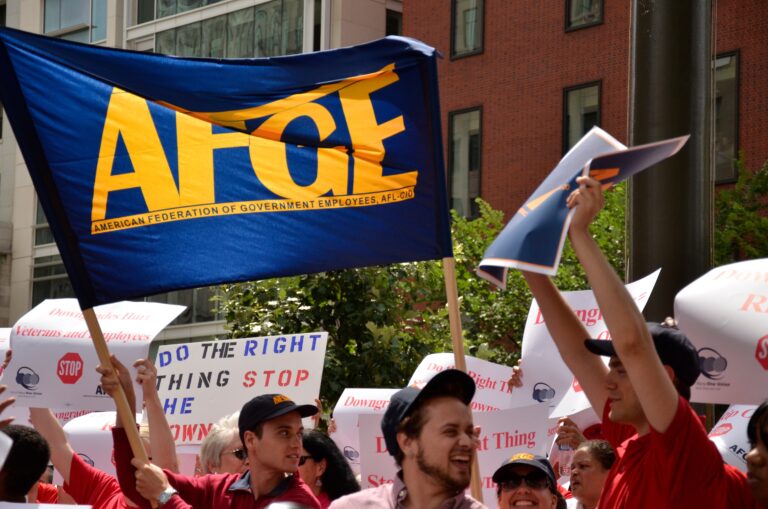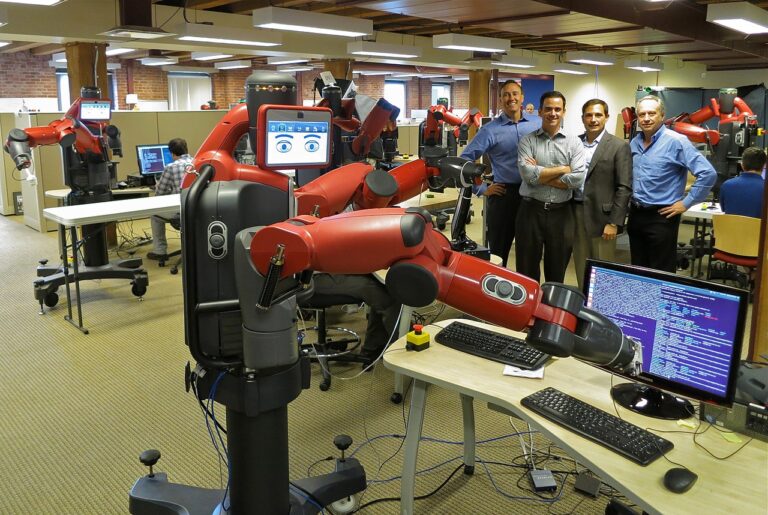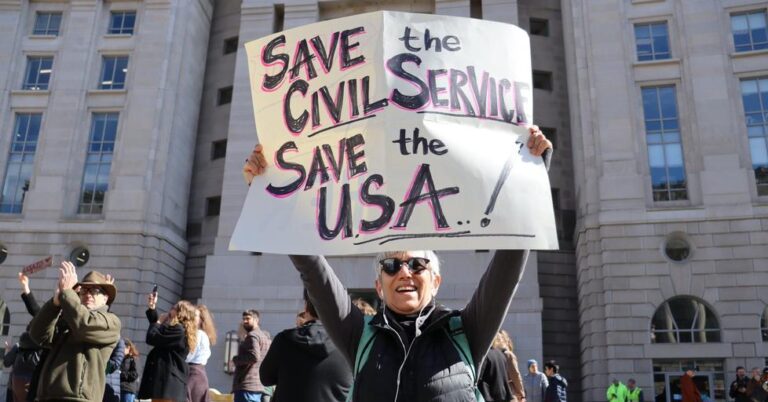
Mikaela Rabb is a student at Harvard Law School and a member of the Labor and Employment Lab.
The Trump administration has made its war on nonprofits abundantly clear. In the face of funding cuts and threats of political retribution, unions may offer a solution. Unions provide a useful forum to facilitate dialogue between workers and management to decide collectively how to manage these tough times. Can this moment of great uncertainty be a new moment for nonprofit unionization?
Nonprofits Are Under Stress
On his first day in office, President Trump issued an executive order (EO) announcing plans for a review and elimination of federal grant funding for Diversity, Equity, and Inclusion (DEI) programs. Agencies quickly took action and suspended funding to grantees, even before the review occurred. Then there was the short-lived, but explosive, order freezing $3 trillion in federal grant funding, including for disaster relief and early childhood education. Two days later, the administration rescinded the order, and courts enjoined it. But this provided little comfort. The administration is still dead set on “reviewing” grant funding to ensure it aligns with the administration’s priorities.
Two weeks later, Trump tried again. In a memorandum, he took direct aim at nongovernmental organizations, stating that “[i]t is the policy of my Administration to stop funding NGOs that undermine the national interest.” The message to nonprofits was clear: get behind Trump’s agenda or lose your funding.
Amid this frenzy, Trump is also making it harder for workers to afford to work in the nonprofit sector. The Public Service Loan Forgiveness program is a vital resource for employees in nonprofits. In a March Executive Order, Trump deemed individuals working for “organizations whose activities have a substantial illegal purpose” ineligible for loan forgiveness. What is an illegal purpose? Those policies and initiatives that Trump has attacked, such as immigration, DEI, LGBTQ+ issues, and Palestine. The EO also suggests that organizations working in these areas do not classify for nonprofit status anyway. This is another tool the Trump Administration has in its arsenal in its war against non-profits, as Harvard University is now experiencing.
All of this comes at a time when nonprofits were already facing budgetary constraints due to inflation, declining donations, and the end of pandemic relief. The instability of the Trump administration makes the economics even harder. Within the first 90 days of 2025, there were an estimated 10,000 job cuts among the nonprofit sector. And it is not clear if donations will flood in like during the first Trump Administration.
But the work has not stopped. In fact, it likely has grown. The rise of draconian immigration enforcement makes immigration advocates more vital. Similarly, cuts in public health funding risks exacerbating health issues, increasing demand for providers. More generally, cuts in public funding mean that nonprofits have to step in to provide important social services like housing, education, and welfare. We’ve seen this before during the COVID-19 pandemic: the demand for services without increases in pay led to higher burnout and turnover. And when these nonprofits suffer, so do their beneficiaries.
The added twist under the Trump Administration is that funding is not the only issue, so is fear. Fearful of retribution, nonprofits have to make strategic decisions on how to effectuate their mission and remain solvent. This shifts the calculation of how these non-profits work, what they are willing to do, and what they deem as too risky. Workers should have an input into these difficult decisions, increasing the urgency for unionization among the non-profit sector.
Unions Can Offer Some Support
Through collective bargaining, unions are a great vehicle to encourage dialogue and decision-making between workers and management. Yet, historically, there has been a view among some in the sector that unions were not necessary in nonprofit governance. When workers and management were aligned on a shared mission that is not focused on profit, and long hours and little pay were seen as the expectation, what role could a union play?
However, these norms are changing. There is a growing realization that unequal economic positions do exist in nonprofits. And staff are less willing to accept substandard wages, especially when they see directors and managers making considerably more. Nonprofit workers are particularly ripe for unionization: they are younger, more educated, and more altruistic. In a time when union membership is at an all time low, nonprofit unions are on the rise.
Still, unionization in this sector poses some unique challenges. Large, well-resourced nonprofits can more easily negotiate wages through collective bargaining. For smaller nonprofits, however, the economics may not work: there truly might not be enough funding to secure wage increases that workers need. But unions can address other non-economic aspects of work, like anti-discrimination, anti-harassment, and working conditions like remote and flexible work arrangements. Furthermore, the value of giving workers a voice in these important decisions in their lives should not be understated.
Another concern is that the mission-oriented, close-knit culture of nonprofits is at odds with the adversarial nature of collective bargaining. But bargaining need not be adversarial. And even when there is conflict, the collective bargaining process provides a productive mechanism to discuss disagreement openly. Voluntary recognition by management is one way to ensure a collaborative spirit throughout the bargaining process. But management can be a barrier too. Despite the social mission, nonprofit leadership has too frequently been resistant to unionization and even actively union-busting.
Economic issues are often a union’s bread and butter. Collective bargaining offers an opportunity to bring workers and management together to strategize about funding decisions. This same mechanism works to address the political concerns raised by the Trump Administration’s war against nonprofits. Unions have been and continue to be politically active, including by standing against the current administration. Workers may want to have these difficult conversations in the workplace and with management. For example, after the murder of George Floyd, nonprofit union members worked with management to establish organization-wide days off in support of racial justice. The Trump Administration makes the risks of speaking out greater, but that should counsel greater need to consult workers in that process. Union members understand these risks and offer useful insight to guide how the organization navigates these troubling times.
As the Trump administration continues to threaten and undermine nonprofits’ viability, unions remain a vital bulwark to ensuring that workers have a voice in the process of figuring out how these organizations can remain viable. The stress the Trump administration places on their work demands creativity and collaboration. Workers have critical perspectives that management should take into consideration when making strategic decisions, and unions offer a helpful platform to facilitate this dialogue.









Daily News & Commentary
Start your day with our roundup of the latest labor developments. See all
December 5
Netflix set to acquire Warner Bros., Gen Z men are the most pro-union generation in history, and lawmakers introduce the “No Robot Bosses Act.”
December 4
Unionized journalists win arbitration concerning AI, Starbucks challenges two NLRB rulings in the Fifth Circuit, and Philadelphia transit workers resume contract negotiations.
December 3
The Trump administration seeks to appeal a federal judge’s order that protects the CBAs of employees within the federal workforce; the U.S. Department of Labor launches an initiative to investigate violations of the H-1B visa program; and a union files a petition to form a bargaining unit for employees at the Met.
December 2
Fourth Circuit rejects broad reading of NLRA’s managerial exception; OPM cancels reduced tuition program for federal employees; Starbucks will pay $39 million for violating New York City’s Fair Workweek law; Mamdani and Sanders join striking baristas outside a Brooklyn Starbucks.
December 1
California farmworkers defend state labor law, cities consider requiring companies to hire delivery drivers, Supreme Court takes FAA last-mile drivers case.
November 30
In today’s news and commentary, the MSPB issues its first precedential ruling since regaining a quorum; Amazon workers lead strikes and demonstrations in multiple countries; and Starbucks workers expand their indefinite strike to additional locations. Last week, the Merit Systems Protection Board (MSPB) released its first precedential decision in eight months. The MSPB had been […]